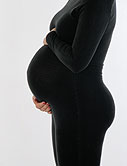
MONDAY, Sept. 14, 2015 (HealthDay News) — The amount of time between a woman’s pregnancies may matter when it comes to the possible risk of her children developing autism, new research suggests.
“Children conceived in less than two years after the birth of their older sibling or greater than six years have [about] a two- to threefold increased risk of being diagnosed with autism,” said study researcher Lisa Croen, director of the autism research program at Kaiser Permanente division of research, in Oakland, Calif.
Croen said that previous studies have shown an increased risk associated with very short pregnancy intervals, and a higher risk with longer than usual intervals. “We are finding the same thing. I think now there is a growing body of evidence that is pointing in the same direction,” she said.
She cautioned, however, that “this is not causal. These kinds of studies can’t prove cause, this is association.”
And at least one neonatologist reiterated that the study only found an association between pregnancy intervals and possible autism, and much more research is needed into the topic.
Croen said the findings lend support to the current recommendation by the World Health Organization to wait at least two years after a child is born before attempting the next pregnancy.
The research was released online Sept. 14 and will be published in the October print issue of the journal Pediatrics.
One in 68 U.S. children has an autism spectrum disorder, according to the U.S. Centers for Disease Control and Prevention. Boys are more likely than girls to be diagnosed with autism, the CDC reports. Genetic and environmental factors may play a role in the condition, which involves problems with communication and socialization.
The new study included medical record reviews of about 45,000 second-born children, delivered between 2000 and 2009 in Kaiser Permanente Northern California hospitals.
The researchers looked at codes that encompass a diagnosis of any condition under the umbrella of autism spectrum disorder (ASD), which can range from mild to severe. The study team also looked at interpregnancy intervals, defined as the time from the first birth to conception of the second child.
Most older siblings of the 45,000 second-born children did not have a diagnosis of ASD, but 878 did. The researchers first analyzed the group without an older sibling with ASD.
For these children, the risk of autism was 1.5 to three times higher for intervals less than 24 months and 72 months or longer, when compared with an interval of 36 to 47 months. Intervals of less than six months appeared to carry the highest risk, the study found.
The researchers did a secondary analysis of those whose older siblings had ASD and found the same pattern — that short or long intervals increased the risk of an ASD diagnosis.
The researchers don’t know how to explain the association with certainty, according to Croen. One possible explanation is that mothers with short intervals between a pregnancy may have depleted levels of folic acid. “Folic acid is a critical nutrient in terms of healthy brain development,” she said.
Dr. David Mendez, a neonatologist at Nicklaus Children’s Hospital in Miami, said many researchers have looked at the pregnancy gap and investigated the effects of long ones versus shorter ones. Some have linked short intervals to psychiatric disorders, such as schizophrenia, he added.
However, Mendez said, “more specific studies need to be done before anyone can say anything definitive.”
Pregnancy interval is one of many factors that may affect a child’s health and upbringing. However, he suggested that avoiding short intervals between pregnancy may make it easier for parents to cope.
More information
To learn more about autism spectrum disorder, visit the U.S. Centers for Disease Control and Prevention.
Copyright © 2025 HealthDay. All rights reserved.

